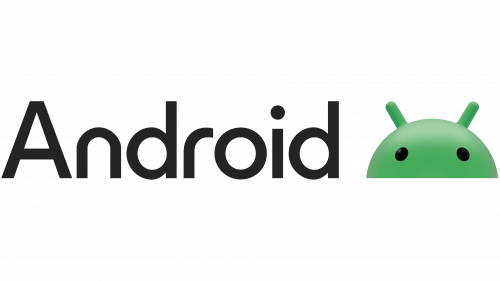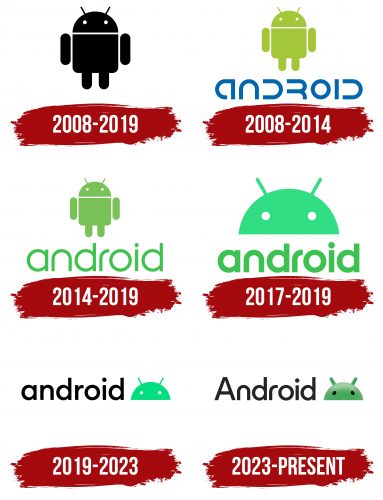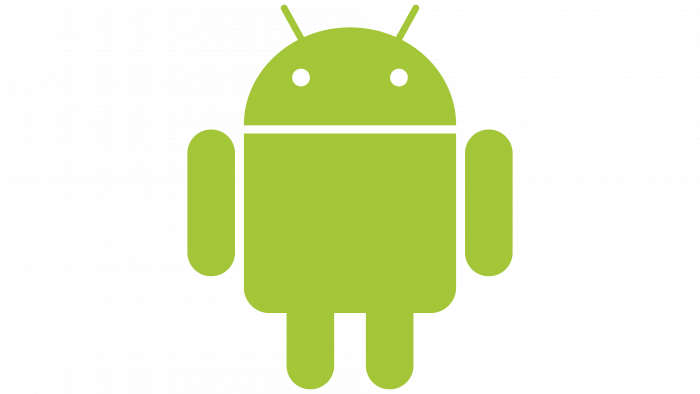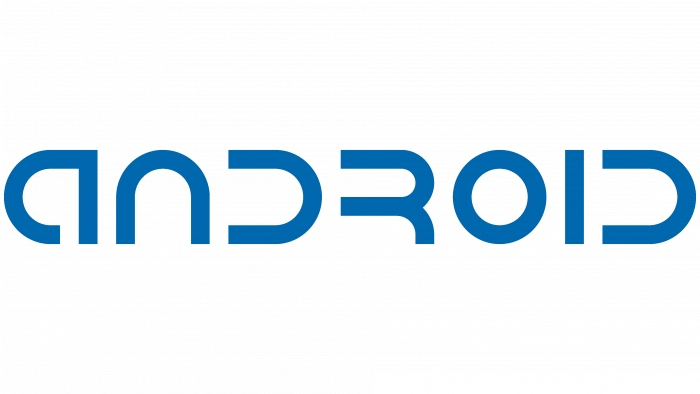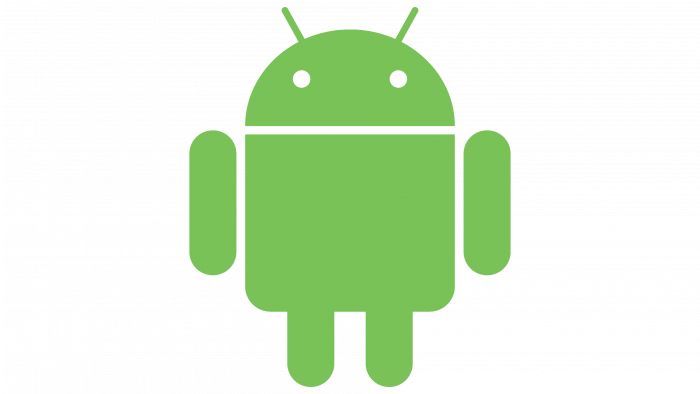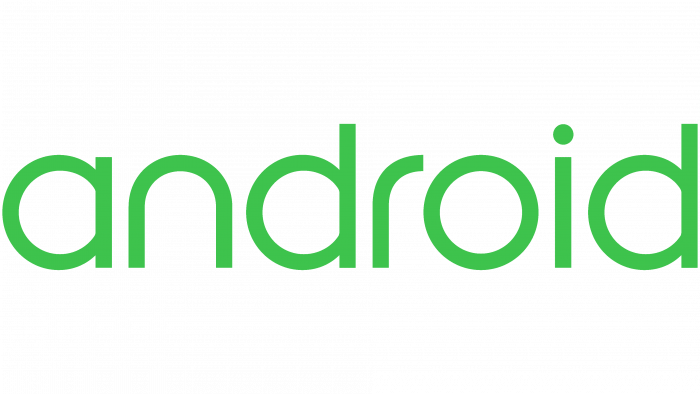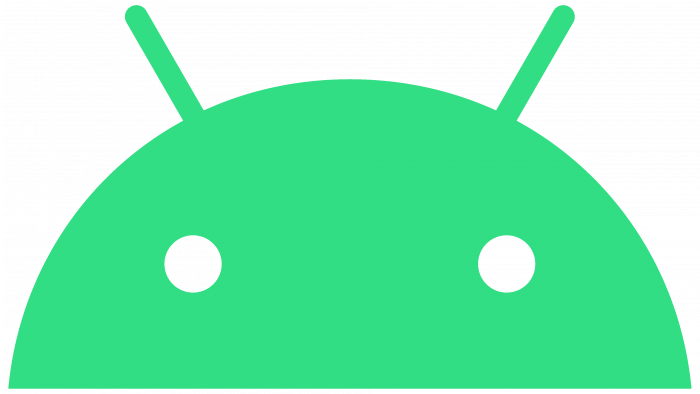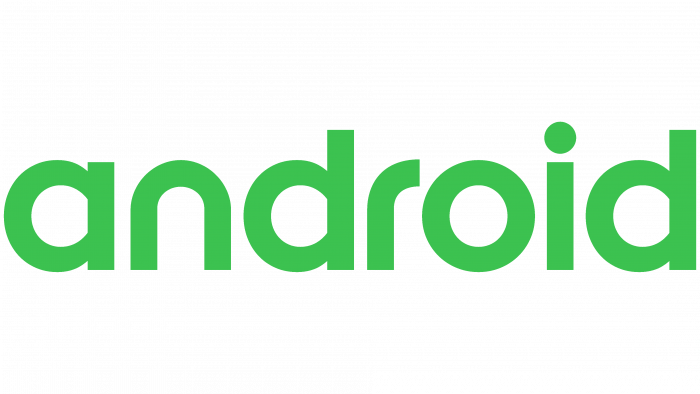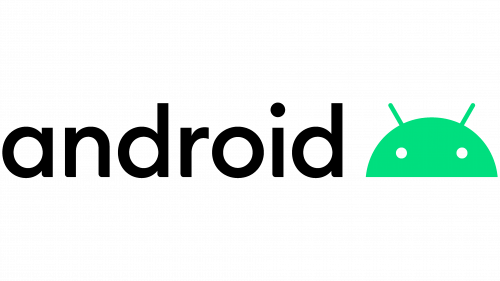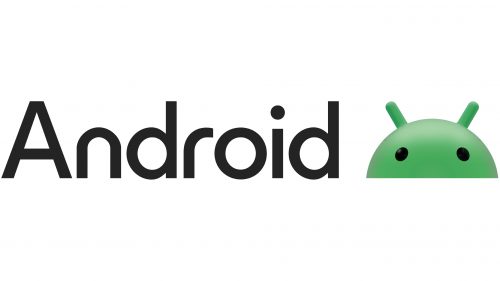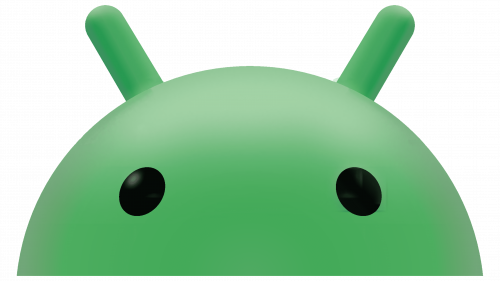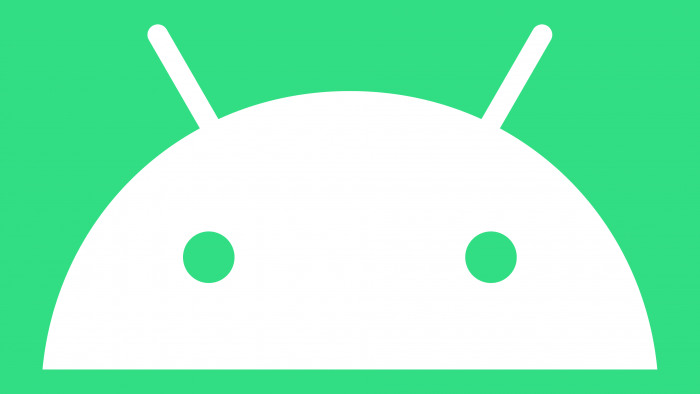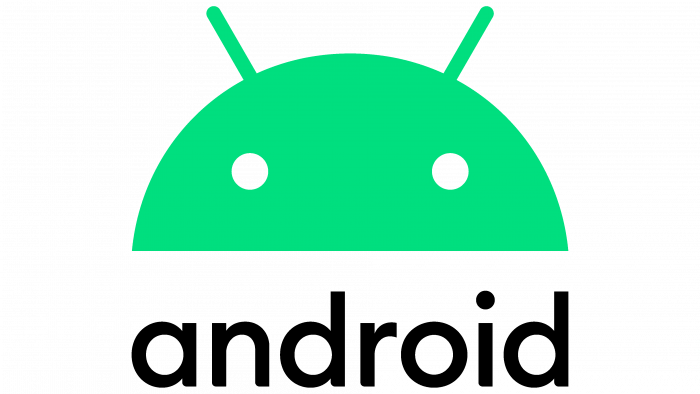The Android logo is an immediate visual cue, signifying a technologically advanced yet approachable assistant robot. The emblem embodies readiness to assist as a vigilant guide through various tasks and processes. This symbolism fosters a sense of trust and accessibility, communicating that assistance is readily available.
Android: Brand overview
| Founded: | September 23, 2008 |
| Founder: | Various (mostly Google) |
| Headquarters: | United States |
| Website: | android.googlesource.com |
Meaning and History
The release of the mobile operating system was announced in 2007. At the same time, the leaders of the Google corporation started thinking about the visual identity of their new product and brought in a whole team of designers. Irina Blok received the order for the development of the logo. Together with her colleagues, she created sketches of all kinds of androids because the delusional owners wanted a robot to be the star of the image. Before the chosen option became a well-known Android icon, it went through many changes and transformations.
What is Android?
Android is an operating system for smartwatches, TV set-top boxes, tablets, smartphones, and other mobile devices. It is based on the Linux kernel and supports a wide range of features found in modern gadgets. Its initial version was released in 2008 on the touchscreen phone HTC Dream. Android has many developers united in the Open Handset Alliance consortium, with Google being considered the most prominent among them.
2008 – 2019
The first version of the robot was black and white, but that did not stop it from becoming an international symbol. Graphic designer Irina Blok used simple geometric shapes as building blocks. The torso is an asymmetric square, the head is a semicircle, the antennae are small thin lines, the eyes are white circles, and the limbs are wide stripes with rounded ends. From a banal set of elements, a memorable logo has turned out, with which all Internet users are now familiar.
Irina Blok experimented for a long time before she came to the final version. She looked for inspiration from a variety of sources, including science-fiction films. But the pursuit of the stars was not inspiring enough. In the end, Irina Blok took the tablets from the toilet doors, where figures of men and women are drawn, made up of circles, triangles and squares. This option turned out to be the most successful because it is understandable to people worldwide. There were also rumors that the android was copied from a character from the arcade game Gauntlet: The Third Encounter, but the designer denied the plagiarism charges.
2008 – 2014
After a little tweaking, the operating system symbol turned green. For him, a light green shade (# A4C639) was chosen to create a contrast with other colors. Simultaneously with the robot icon, a blue wordmark was used: the stylized inscription “ANDROID.” Most letters lacked sidelines, with the first “A” looking lowercase. It was assumed that such a font would be the most technologically advanced and “computer.”
2014 – 2019
In 2014, the Android 5.0 Lollipop system was released with a new logo. The designers kept the classic image of the robot but repainted it in a darker shade. “Android” is now light green with all characters converted to lowercase. For the changed wordmark, the developers chose an understandable font – a round geometric sans serif. Users first saw this design option in Android 4.4.4 KitKat, but it received an official text logo status only in the Lollipop system.
2017 – 2019
Shortly before the global redesign, the operating system creators updated the inscription, making the letters bold. The new version graced the loading screen, advertisements, and the platform’s website.
2019 – 2023
The current Android logo is the result of painstaking work by HUGE. Representatives of the creative agency completely revised the familiar brand to add modernity and accessibility to it. The basis of the identity is the green head of a robot in the form of a semicircle with eyes-circles and two antennas. Everything is as usual, but the color is now close to mint.
For the lettering, the designers used a black and thinner font. This made it possible to make the title well readable against any background. The changes took effect with the release of a new version of the operating system – Android 10.
2023 – today
The Android logo’s transformation marks a pivotal shift in brand perception. With a revamped capital “A,” the logo now radiates a sense of maturity, contrasting its previous playful vibe. The change speaks to Android’s growth and its ambition to be seen as a serious competitor in the OS market.
While flat design remains a prevailing trend in tech, Android defies this norm by evolving its iconic robot mascot into a 3D entity. This bold move provides the mascot with an enriched personality, elevating it from a mere symbol to a character capable of adapting to various scenarios and apps.
Android’s rebranding strategy includes tighter integration with Google. The new, sharp “A” serves a dual purpose: it makes a bold aesthetic statement while fortifying Android’s association with Google. This symbiosis is designed to create a more cohesive user experience and strengthen brand alignment between Android and its tech giant parent company.
This visual shift aims to redefine user interaction across millions of devices, marking a significant change in how consumers perceive Android and its products and services.
The redesigned logo—complete with its 3D robot—captures Android’s nuanced character, aligning it more closely with Google and signaling the brand’s readiness for the evolving tech world.
Android: Interesting Facts
Android is the world’s most used mobile operating system, with a rich history and a big impact on tech and our daily lives.
- Beginnings and Google’s Purchase: Andy Rubin and his team founded Android Inc. in 2003 in California, aiming to develop it for digital cameras before shifting to mobile phones. Google bought the company 2005 for about $50 million, starting Android’s path as a smartphone OS.
- First Android Phone: The HTC Dream, launched in 2008, was the first to run Android. It had a slide-out keyboard and laid the groundwork for later touchscreen models.
- Open Source Advantage: Android’s foundation is the Linux kernel, and it’s open source. This means anyone can modify and share its code. This openness has led to a wide variety of devices and rapid innovation.
- Google Play Store: Originally the Android Market, the Google Play Store started in 2008. It’s essential for downloading apps, games, and more, playing a huge role in Android’s popularity.
- Fragmentation Issue: A common critique of Android is fragmentation, making updating all devices to the latest version hard. Google has been working on solutions like Project Treble to improve updates.
- Version Names: Android used to name its versions after desserts in alphabetical order until Android 10. After that, Google switched to numerical names for simplicity.
- Most Popular OS: Android dominates the global mobile OS market thanks to its versatility and wide adoption by manufacturers and users.
- Android One and Go: Google introduced Android One for a consistent user experience with regular updates and Android Go for entry-level devices, ensuring smoother performance on less powerful hardware.
- Beyond Phones: Android for phones and tablets. It’s also in wearables (Wear OS), TVs (Android TV), and cars (Android Auto), showing its flexibility.
- Billions of Users: Over 2.5 billion devices run Android worldwide, from smartphones to smart TVs, making it incredibly widespread.
Android’s development from a startup idea to the world’s leading mobile OS highlights its innovation, adaptability, and central role in technology. Its expansion into various device types indicates it will continue to shape tech trends for years.
Font and Colors
The iconic platform icon was named Bugdroid because its upper part resembles a beetle. The Android team came up with this comic nickname themselves, and it is still used today, even though the robot’s torso is missing on the emblem. The friendly mascot originally symbolized the curiosity and fun at the heart of open operating system standards.
The Android logo font changed from complex to simply because the developers realized how important it is to make the lettering clear and understandable. Designers at HUGE have selected a sans-serif typeface suitable for display on any screen size. It is similar to Montreal Serial Medium, but the letters at the bottom have slight curves. At the same time, the inscription has become completely black, which is also designed to increase readability.
After the redesign, Bugdroid received an updated green color (# 3DDC84). In addition, experts have come up with a whole palette of additional shades to improve contrast. Even the greenish-yellow, orange, and blue logos are considered official and allowed for use in different visual contexts.
Android color codes
| Black | Hex color: | #000000 |
|---|---|---|
| RGB: | 0 0 0 | |
| CMYK: | 0 0 0 100 | |
| Pantone: | PMS Process Black C |
| UFO Green | Hex color: | #00df7f |
|---|---|---|
| RGB: | 0 223 127 | |
| CMYK: | 100 0 43 13 | |
| Pantone: | PMS 3405 C |
